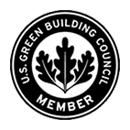Two other beach-based stories look at the problem of beach erosion from different ends of the telescope. One article looks at efforts to restore and expand beaches which have been impacted by erosion, while the other explains how natural plant life can be the first line of defense both for the beaches - and the cities and communities nestled behind them.
We also take a look at the purchase of ecologically fragile areas of land which, in the future, will offer safe harbor for flora and fauna.













